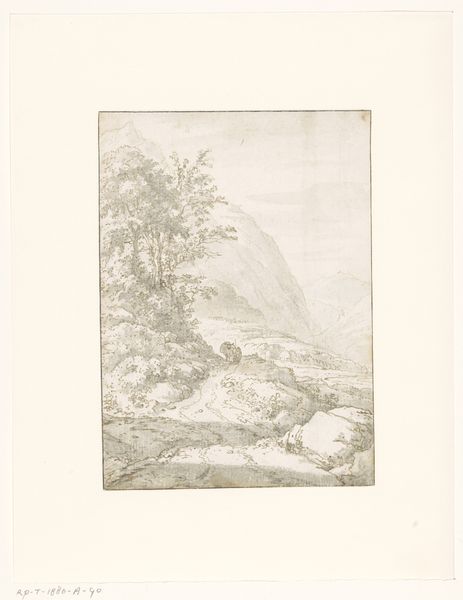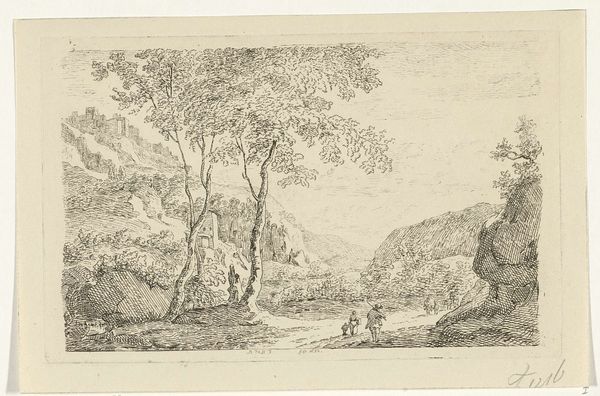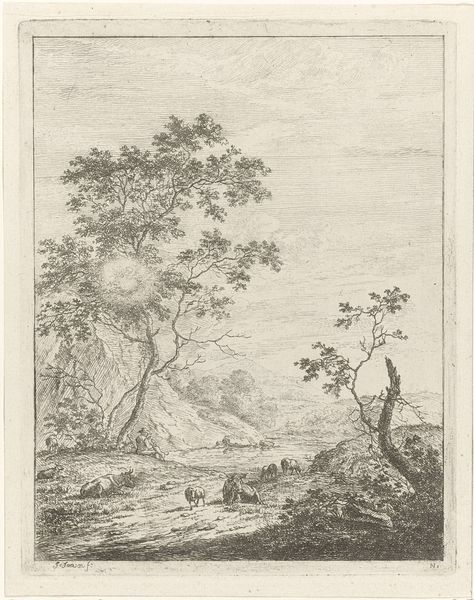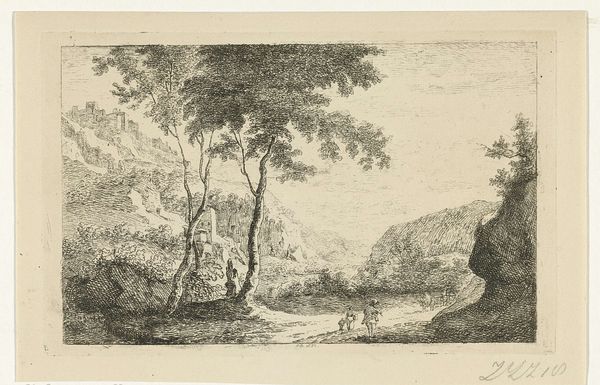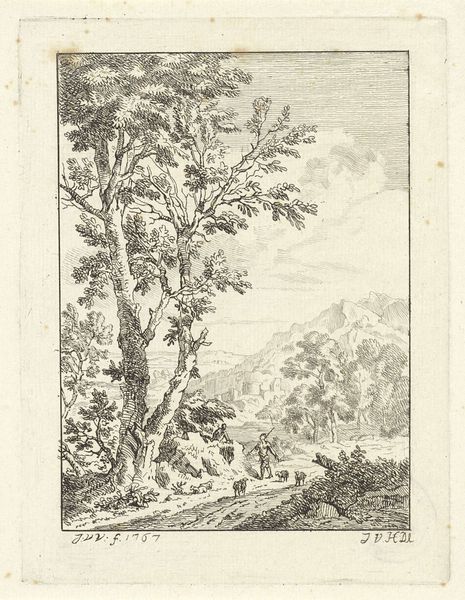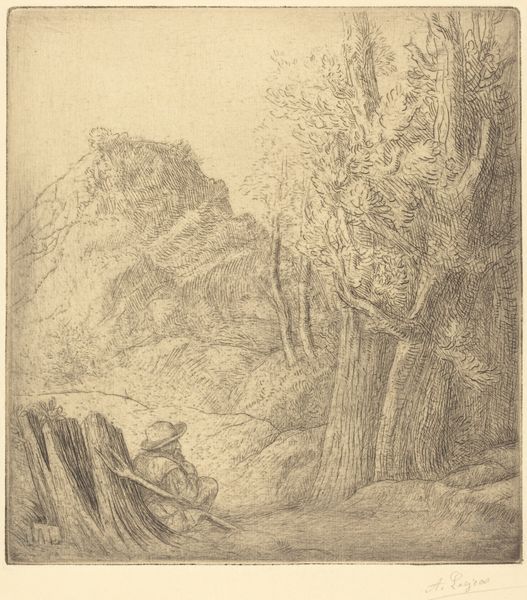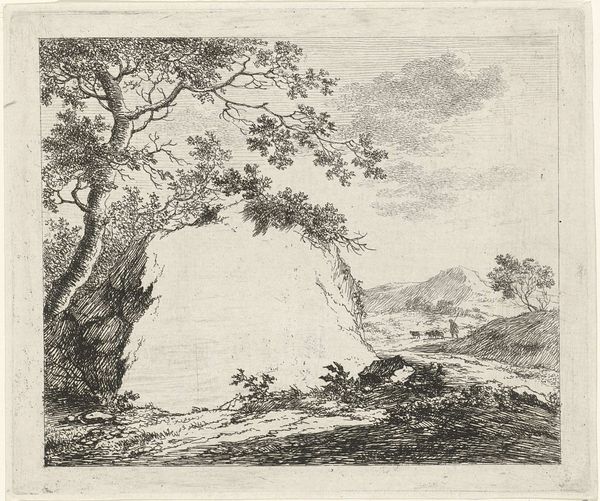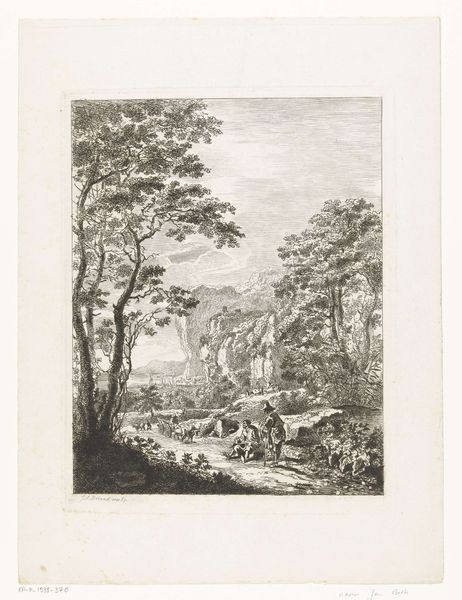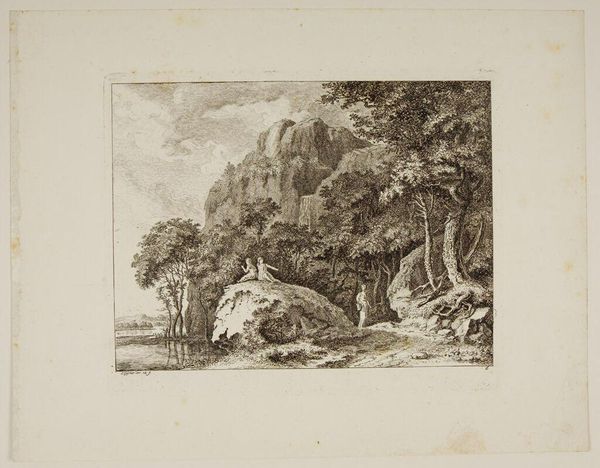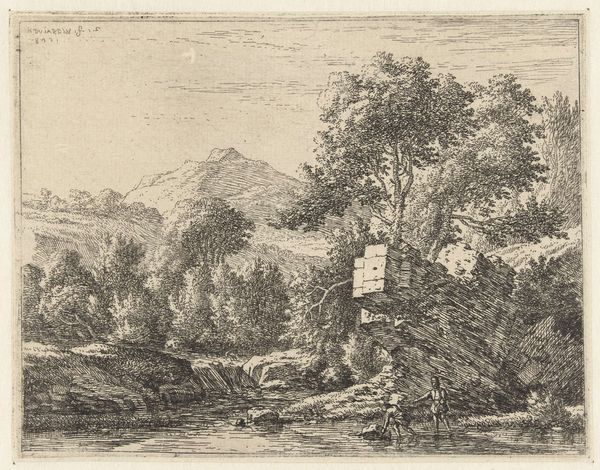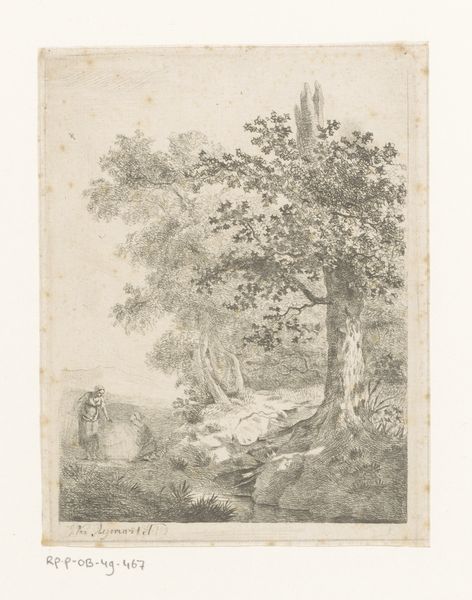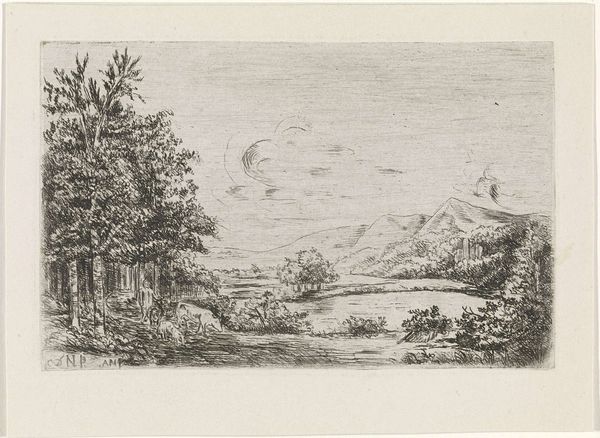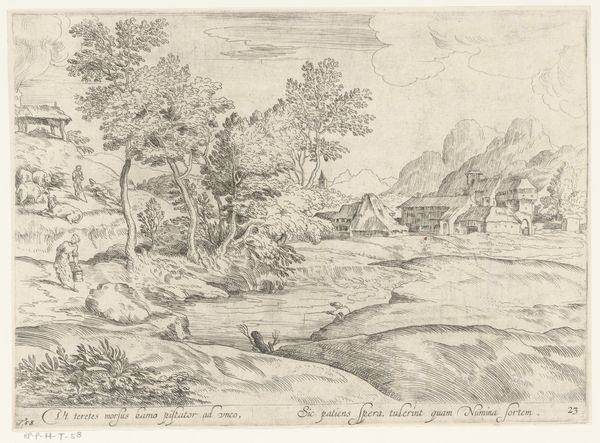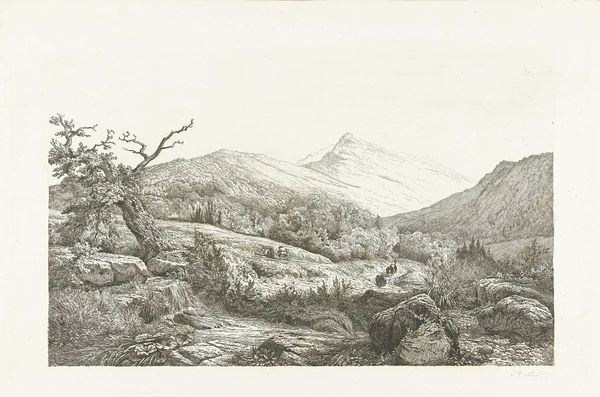
etching
#
etching
#
landscape
#
etching
#
geometric
#
romanticism
#
mountain
#
line
Dimensions: height 216 mm, width 164 mm
Copyright: Rijks Museum: Open Domain
Reinierus Albertus Ludovicus baron van Isendoorn à Blois created this mountain landscape using etching, a printmaking technique that relies on acid to corrode lines into a metal plate. The resulting print showcases the delicate yet firm line work made possible by this technique, and the layering of tones which suggest a recession of space. Etching allowed the artist to achieve fine detail, capturing the textures of foliage and rock formations, while also facilitating the mass production of images, catering to a growing market for landscape prints in the 19th century. The baron's social status gave him access to the leisure time and resources necessary to master the craft, and also indicates the changing role of aristocratic patronage in the arts, as traditional forms of craftsmanship became increasingly intertwined with broader economic and social forces. By exploring the materiality and techniques involved in its creation, we gain a deeper understanding of the intersection of art, craft, and society in the 19th century.
Comments
No comments
Be the first to comment and join the conversation on the ultimate creative platform.
